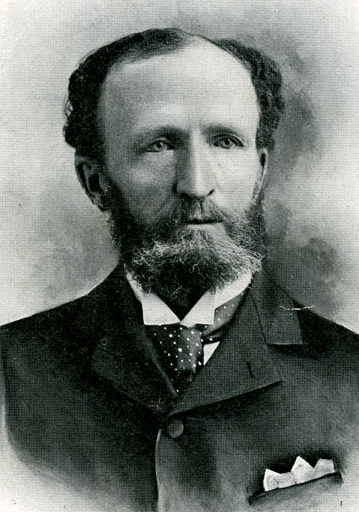William P. Brooks: Difference between revisions - Wikipedia
 Article Images
Article Images
Content deleted Content added
| (8 intermediate revisions by 8 users not shown) | |||
Line 1: {{Short description|American agricultural scientist}} {{Infobox officeholder |name = William Penn Brooks Line 34 ⟶ 35: Brooks' collegiate activities are notable because of his role in founding [[Phi Sigma Kappa]] fraternity along with five fellow students. While at "Aggie," Brooks was a member of the [[Irving Literary Society (Cornell University)|Washington Irving Literary Society]], a popular pastime among the undergraduates. He was a member of the Gymnastic Association, held the military rank of captain in the College's Battalion, and was an editor of the 1875 version of the college yearbook. His peers honored Brooks by election as permanent historian of the class. He was valedictorian of the [[Massachusetts Agricultural College]] class of 1875, where he had specialized in [[agricultural chemistry]]. Yet among all these, it was his role as a Founder of [[Phi Sigma Kappa]] fraternity in his Sophomore year by which his name is best remembered today.<ref name="Phi Sigma Kappa Rand History" /> ===Early career in Japan=== Line 45 ⟶ 46: Brooks stressed both the theoretical and practical in his classes. Students were assigned six hours of field work a week and paid by the hour. Brooks also contributed much to the English education. He conducted the three kinds of English classes, "English" including "Composition" and "Elocution," "Debate," and "Declamation" from 1877 to 1886. His instruction, with diligence and leadership, was intended to qualify students to write and speak English correctly and effectively; focused on the essential points, less encumbered with irrelevant matter; and improved students greatly, giving both more ability and confidence in the expression of ideas.<ref>Akaishi, K. (2013). English teaching and the outcomes by W. P. Brooks, Professor of Sapporo Agricultural College: Investigation of his letters. Nihon Eigo Kyoikushi Kenkyu, 28, 1-22.</ref> In 1882, Brooks traveled home on leave and married. His wife, Eva Bancroft Hall Brooks went after him to live in Sapporo until his contract expired in 1888. During this time they had two children, Rachel Bancroft Brooks and Sumner Cushing Brooks (also to become a Phi Sig, ''Alpha, 1910''), who later married noted American biologist [[Matilda Moldenhauer Brooks]].<ref>{{cite ===Back to Amherst, by way of Germany=== Brooks returned to the United States in October 1888 after having received the [[Order of the Rising Sun]] (4th class) from [[Emperor Meiji]], and accepted a position at Massachusetts Agricultural College as a lecturer, and for two years, as president (1905–06). Brooks continued graduate study at the [[University of Halle]] in [[Germany]], where he earned his doctorate. Continuing as a lecturer at Massachusetts Agricultural, he became the director of the [[Massachusetts Agricultural Experiment Station]]<ref>The Ag Experimental Station was located at the north apex of the inner ring of the campus, [https://credo.library.umass.edu/view/full/murg036_100-i043 as shown on this map from 1893], accessed 22 Sept 2020. The campus grew around it and the buildings were later repurposed. East Experiment Station, at 671 North Pleasant houses the UMass Press. It was announced in 2015 that the West Experimental Station would be [https://www.umass.edu/newsoffice/article/video-brick-brick-reconstruction-west moved from its nearby location, and its historic facade rebuilt], link also accessed 22 Sept 2020.</ref> until his retirement in 1921, where he is remembered for introducing Japanese cultivars, including several Japanese varieties of [[soybean]] and [[millet]]. In 1920, Brooks received an honorary doctorate from the Minister of Education in Japan. [[File:Old North College, at the University of Massachusetts, site of Phi Sigma Kappa founding, circa 1923, sm.jpg|right|400px|Old North Hall, site of ===Retirement=== Line 74 ⟶ 75: ==Selected works== *[https://books.google.com/books?id=h6QpAQAAMAAJ&dq=inauthor%3A%22William%20Penn%20Brooks%22&pg=PA3 *[https://books.google.com/books?id=-pYpAQAAMAAJ&dq=inauthor%3A%22William%20Penn%20Brooks%22&pg=PA3 *[https://books.google.com/books?id=xJYpAQAAMAAJ&dq=inauthor%3A%22William%20Penn%20Brooks%22&pg=PA51 *[https://books.google.com/books?id=hbs2AQAAIAAJ *[https://archive.org/stream/cu31924000909444#page/n1/mode/2up "Experiment Station Accuracy"], correspondence with Andrew H. Ward (1899) *"Agriculture" (1901) :* [https://books.google.com/books?id=VFAvAQAAIAAJ&dq=%22William%20Penn%20Brooks%22&pg=PP7 :* [https://books.google.com/books?id=vlAvAQAAIAAJ&dq=inauthor%3A%22William%20Penn%20Brooks%22&pg=PA197 :* [https://books.google.com/books?id=G1EvAQAAIAAJ&dq=inauthor%3A%22William%20Penn%20Brooks%22&pg=PA521 *[https://books.google.com/books?id=7Lw2AQAAIAAJ *[https://books.google.com/books?id=x7DncI_EIDoC *[https://books.google.com/books?id=hL82AQAAIAAJ *[https://books.google.com/books?id=hL82AQAAIAAJ *[https://books.google.com/books?id=hL82AQAAIAAJ *[https://books.google.com/books?id=CwInAQAAMAAJ *[https://books.google.com/books?id=CwInAQAAMAAJ ==References== Line 96 ⟶ 97: ==External links== * {{Internet Archive author |sname=William P. Brooks |sopt=t}}
{{University of Massachusetts Amherst leaders}} | |||